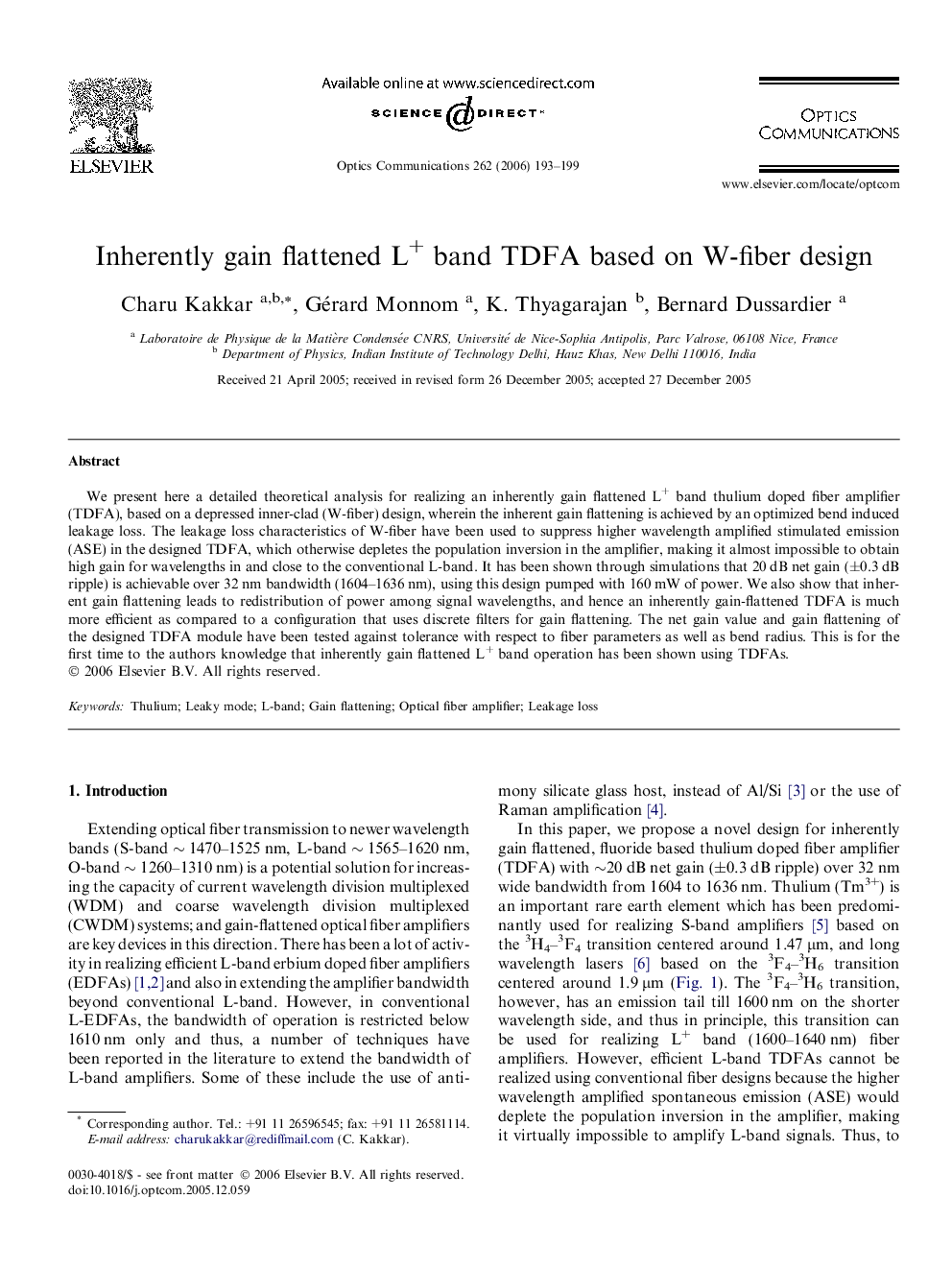| Article ID | Journal | Published Year | Pages | File Type |
|---|---|---|---|---|
| 1541461 | Optics Communications | 2006 | 7 Pages |
Abstract
We present here a detailed theoretical analysis for realizing an inherently gain flattened L+ band thulium doped fiber amplifier (TDFA), based on a depressed inner-clad (W-fiber) design, wherein the inherent gain flattening is achieved by an optimized bend induced leakage loss. The leakage loss characteristics of W-fiber have been used to suppress higher wavelength amplified stimulated emission (ASE) in the designed TDFA, which otherwise depletes the population inversion in the amplifier, making it almost impossible to obtain high gain for wavelengths in and close to the conventional L-band. It has been shown through simulations that 20 dB net gain (±0.3 dB ripple) is achievable over 32 nm bandwidth (1604-1636 nm), using this design pumped with 160 mW of power. We also show that inherent gain flattening leads to redistribution of power among signal wavelengths, and hence an inherently gain-flattened TDFA is much more efficient as compared to a configuration that uses discrete filters for gain flattening. The net gain value and gain flattening of the designed TDFA module have been tested against tolerance with respect to fiber parameters as well as bend radius. This is for the first time to the authors knowledge that inherently gain flattened L+ band operation has been shown using TDFAs.
Related Topics
Physical Sciences and Engineering
Materials Science
Electronic, Optical and Magnetic Materials
Authors
Charu Kakkar, Gérard Monnom, K. Thyagarajan, Bernard Dussardier,
